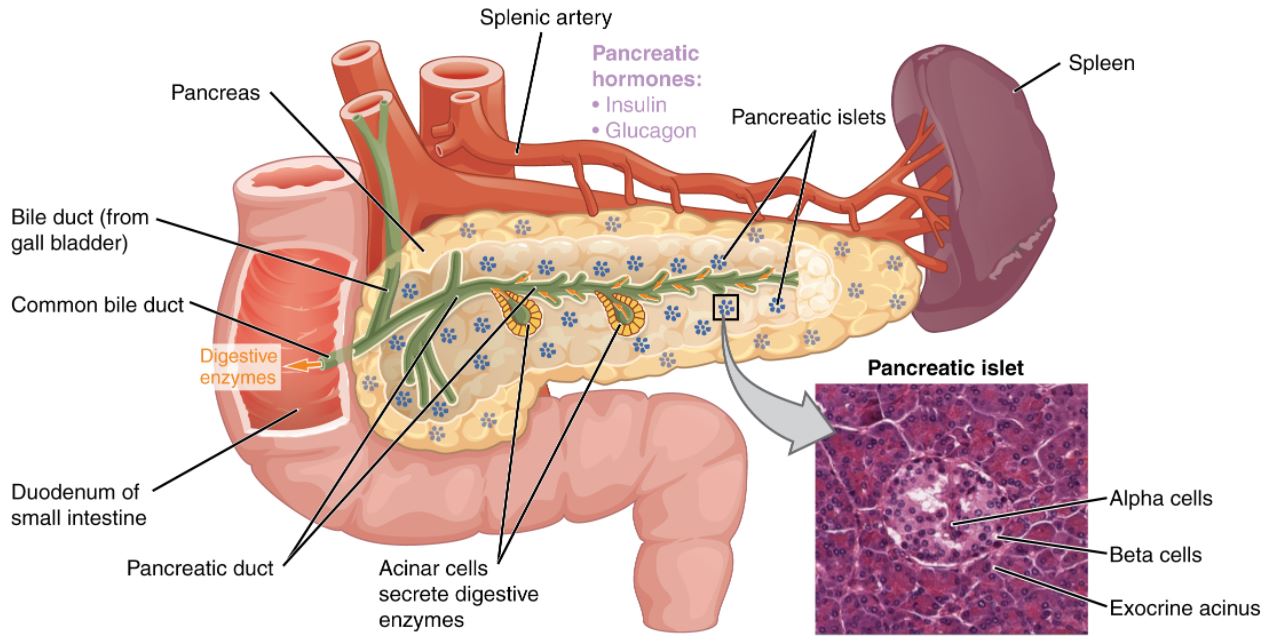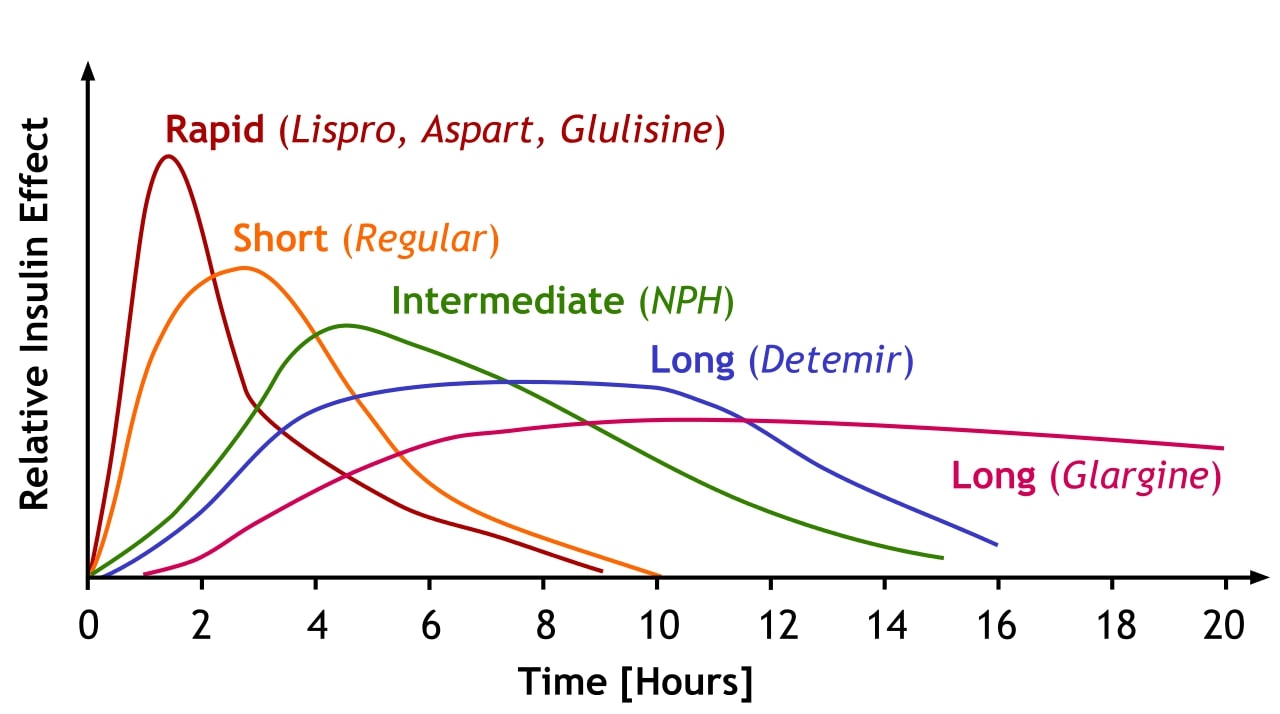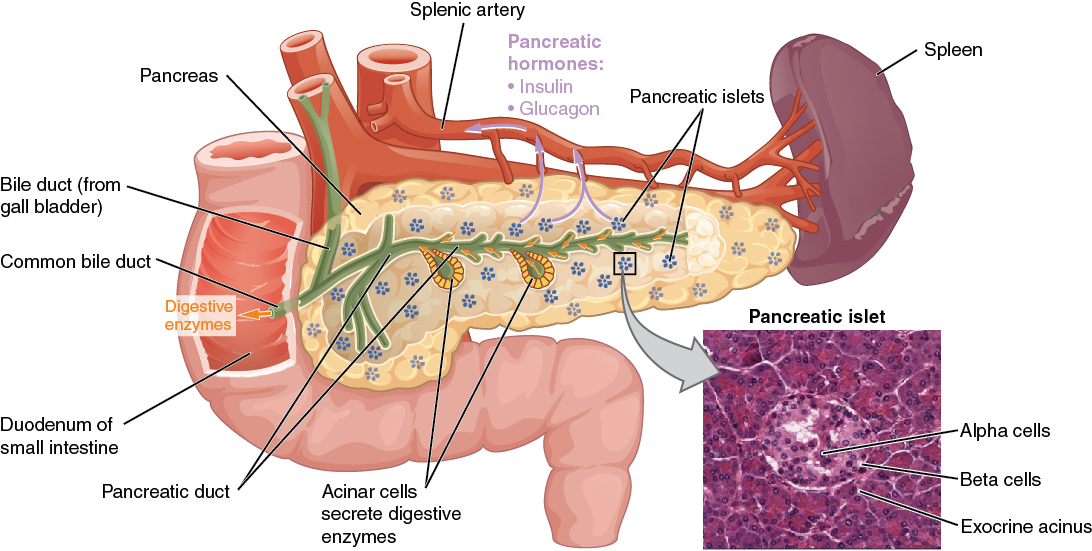Playlist
Show Playlist
Hide Playlist
Basal-bolus Insulin Therapy with Case
-
Slides 02-03 Diabetes Mellitus part 2.pdf
-
Reference List Endocrinology.pdf
-
Reference List Diabetes Mellitus.pdf
-
Download Lecture Overview
00:00 Let's go on to another case. A 42-year-old man presents to his primary care physician for preventative care. He does not have any current complaints. His father died of diabetic nephropathy. 00:13 His vital signs include a temperature of 36.7°C, a blood pressure of 150/95, and a pulse of 90 beats/minute. Fasting glucose is 159 mg/dL on 2 separate occasions and the hemoglobin A1c is 8.1%. 00:33 The patient is started on metformin and lifestyle modifications after the diagnosis of type 2 diabetes was made. Three months later he comes to a follow-up visit. His serum blood glucose is now 370 mg/dL and his hemoglobin A1c is 11%. The patient currently complains of weight loss and excessive urination. What is the optimal therapy for this patient? In this clinical scenario, we need to initiate insulin therapy. The driving factors here are a man whose blood glucose is poorly controlled despite lifestyle modifications and metformin. His hemoglobin A1c is greater than 10 and his random blood glucose is greater than 300 and this is an indication to comment insulin. 01:22 Insulin therapy in type 2 diabetes is indicated where there is symptomatic hypoglycemia, markedly elevated hemoglobin A1cs at the time of diagnosis, a failure of lifestyle modifications and non-insulin therapies to achieve glycemic goals. The recommendation of the American Association of Clinical Endocrinologists is a weight-based dosing of a basal insulin at doses of 0.1-0.3 units/kg. 01:48 Increase the dose over several units every 2-3 days to reach fasting plasma glucose goals based on the patient's fingerstick blood glucose readings. Basal bolus insulin therapy is scheduled to mimic the physiologic insulin secretion and has 3 components. First of all, a long or intermediate acting insulin given once or twice daily to cover the basal insulin needs, bolus prandial insulin with rapid or short-acting insulin given before meals, and then a correction insulin of rapid or short acting insulin is given where there is hypoglycemia.
About the Lecture
The lecture Basal-bolus Insulin Therapy with Case by Michael Lazarus, MD is from the course Diabetes Mellitus. It contains the following chapters:
- Case: 42-year-old Man Presents for Preventive Care
- Insulin Therapy for Type 2 DM
- BBIT
Included Quiz Questions
How should insulin be initiated in a patient with type 2 diabetes?
- Basal insulin at 0.1–0.3 units/kg, with or without mealtime coverage to start
- Short-acting insulin before each meal at 0.1–0.3 units/kg
- Basal and short-acting insulin twice daily in a ratio of 30:70
- Short-acting insulin each morning at 0.1–0.3 units/kg
- Basal insulin at 1.0 units/kg, with or without mealtime coverage to start
What is the optimal therapy for the patient described below? A 42-year-old man presents to his primary care physician for preventative care. He does not have any current complaints. His father died of diabetic nephropathy. Physical examination results: Temperature of 36.7°C (98.06°F), blood pressure of 150/95 mm Hg, and a pulse of 90 beats /min. Laboratory test results: Fasting blood glucose level of 159 mg/dL (on 2 occasions) and HbA1c level of 8.1%. The patient is started on metformin and lifestyle modifications. Three months later, he presents for a follow-up visit. Laboratory test results: Blood glucose is 370 mg/dL, and HbA1C is 11%. The patient currently complains of weight loss and excessive urination.
- Insulin therapy
- Carbohydrate-counting diet
- Addition of a second oral hypoglycemic agent
- An increase in the current dosage of metformin
Customer reviews
5,0 of 5 stars
| 5 Stars |
|
5 |
| 4 Stars |
|
0 |
| 3 Stars |
|
0 |
| 2 Stars |
|
0 |
| 1 Star |
|
0 |






